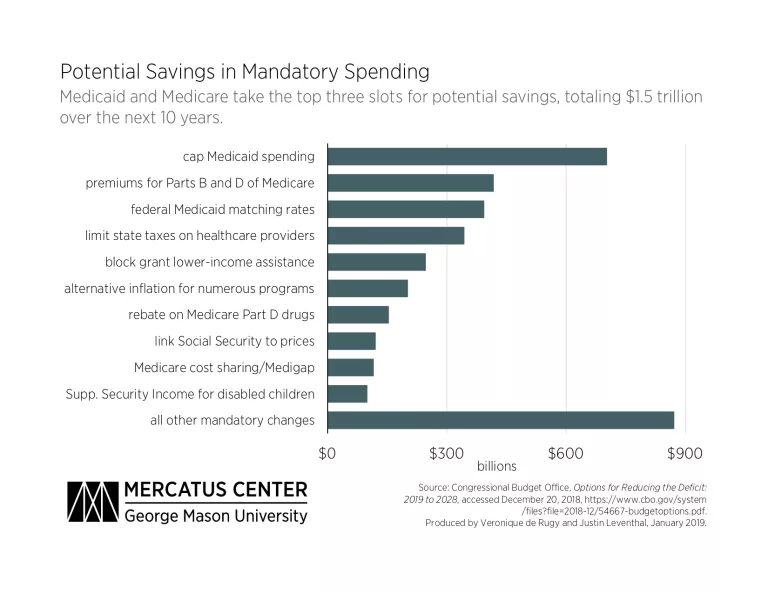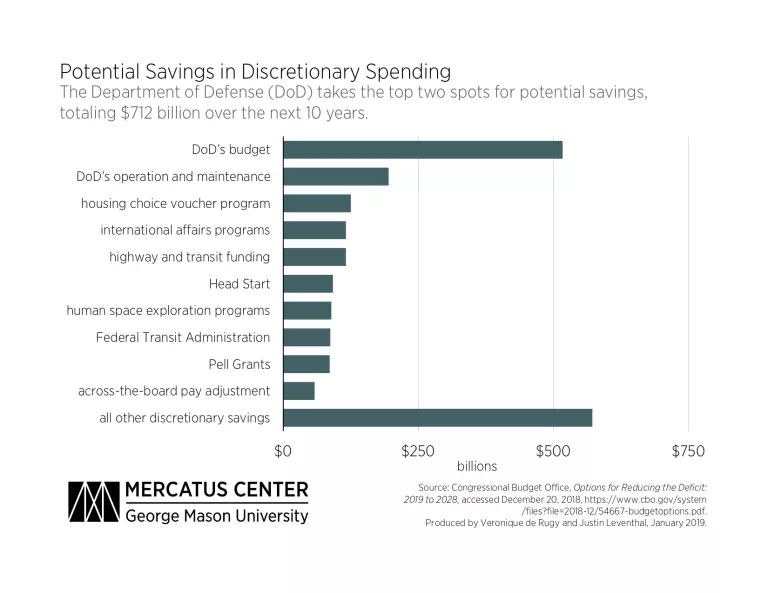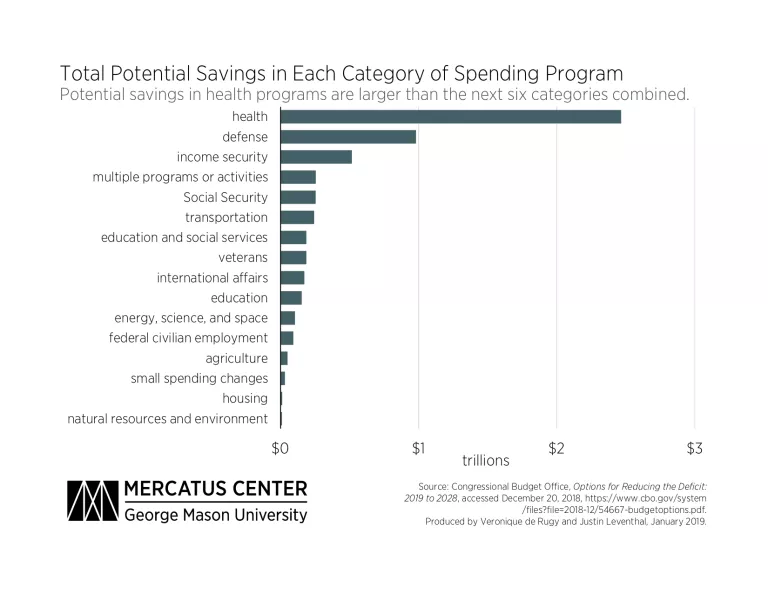- | Government Spending Government Spending
- | Data Visualizations Data Visualizations
- |
CBO Offers Many Options to Reduce the Federal Deficit
Federal fiscal deficits are now the norm in policymaking. It should be unsurprising, then, that the national debt more than doubled in only 10 years. As the recent Congressional Budget Office (CBO) report Options for Reducing the Deficit: 2019 to 2028 notes, even when measured as a percentage of the economy, the debt of the United States is as large as it has ever been and it is projected to grow even more. Mandatory spending (which is dominated by Social Security, Medicare, and Medicaid) is already 70 percent of federal spending and is expected to account for larger and larger proportions of the federal budget. Defense is the largest discretionary spending program.
The CBO report sets out numerous options for reducing the federal deficit, and it should be no surprise, given that mandatory spending is growing faster than discretionary spending, that the proposed spending cuts fall more heavily on mandatory spending. While some options laid out by the CBO may not be politically feasible, there is a total of $5.8 trillion in options available to Congress to choose from.
Of the categories of programs that the CBO identified, potential savings in mandatory health programs (including Medicare) are the largest. They are $1.5 trillion greater than the next-largest category, discretionary defense programs. These two are followed by the two mandatory spending categories of income security (which includes the Temporary Assistance to Needy Families program) and Social Security.

The potential savings in mandatory spending total $3.7 trillion. Health takes all four of the top slots, with a cap on Medicaid spending saving the most—as much as $703 billion over the next decade. In fact, of the top 10 potential savings in mandatory spending, 6 are in health programs.
The aging of the US population and the approaching retirement of the baby boomers are expected to increase the cost of health programs and Social Security. Indeed, CBO has proposed $202 billion in savings through the relatively simple change of linking numerous programs, including benefit payment growth of Social Security, to a better indicator of inflation. These health and income security programs, therefore, are the source of the largest potential savings.

Discretionary spending, and the proposed savings therein, are more varied than mandatory spending. That said, the top two categories for potential savings are from the Department of Defense (DoD). Between reductions in DoD’s budget and its operations and maintenance costs, a possible $712 billion in savings is available to American taxpayers over the next decade.

Looking at both mandatory and discretionary spending together, health and defense programs represent the largest of those programs the CBO identified for deficit reductions. Health programs alone represent $2.5 trillion in potential deficit reductions over the next decade. Defense spending represents nearly another trillion dollars of possible deficit reductions.

Policymakers need to make a serious effort to constrain runaway budgets and debt. This CBO report is a good starting point.
Additional details
A recent CBO report identified numerous ways the federal government could reduce the deficit over the next decade. The largest savings are in mandatory spending—specifically health spending—and in defense programs.

